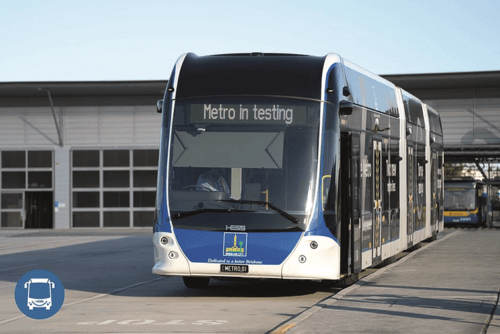AUSTRALIA
Swiss manufacturer of electric buses Hess has received the green light to deliver the electric bus system for the Australian city of Brisbane. Hess will supply 60 24.5m double-articulated vehicles along with associated charging infrastructure.
The order from Brisbane was placed after extensive testing with a pilot vehicle from the manufacturer’s lighTram vehicle family, which is already being used in numerous cities in the manufacturer’s native Switzerland and elsewhere in Europe.
Hess CEO Alex Naef said his company is looking forward to working closely with Brisbane City Council on its landmark transport project. “It is a great honour for us to make our contribution to this local transport system. The lighTram 25 is unique in the Australian transport sector: a means of transport that can carry a large number of people efficiently, quietly and sustainably, while at the same time offering passengers a pleasant travelling experience.”
Alex said the order marks an important confirmation of how attractive the combination of lighTram 25 and rapid charging technology is for local public transport not only in Europe but all over the world. “This flexible means of transport is not dependent on rails, and, thanks to its on-road versatility, can be easily adapted to a wide variety of traffic routes. The lighTram 25 is one of the most cost-effective solutions for cities to optimise local public transport and achieve state environmental goals, over the entire service life of the vehicle.”
The first 24.5-metre bus has been in Brisbane since April. Following acceptance tests, the bus was put through its paces on the city’s streets, including its performance, manoeuvrability, speed, acceleration and braking characteristics, energy consumption, charging processes, accessibility and general driving behaviour.
“Brisbane City Council, Hess and other key stakeholders have invested a great deal of time in the development of what is set to become one of Australia’s busiest modes of public transport. The model for the Metro line is unique: It offers, amongst other things, three spacious, disabled-friendly areas in the first compartment, an electric wheelchair ramp, hearing loops and the option of communicating with the driver via on-board intercom,” explained Alex.
“During vehicle development and testing, there was close cooperation with associations for the disabled and other residents in order to test the accessibility and user-friendliness of the metro pilot vehicle. The feedback from the drivers is also very positive, with driving stability and manoeuvrability receiving particularly positive ratings.”
Australia’s first rapid charging system is being built for the vehicles on the Metro line, and work on the charging infrastructure is already underway. Alex explained that Hitachi Energy, in cooperation with Hess, will complete a charging station system at both ends of the line and in the Metro bus depot in time for the start of the service.
“Thanks to the flash charging system, a Metro bus can be fully charged in less than six minutes. Not only is this exceptionally fast, we also took into account that the batteries have to be light and the vehicles are in frequent use. In our opinion, the vehicles from Hess are primarily there to transport passengers and not batteries,” he emphasised.
Delivery of the Metro fleet is scheduled to start at the end of 2023.


